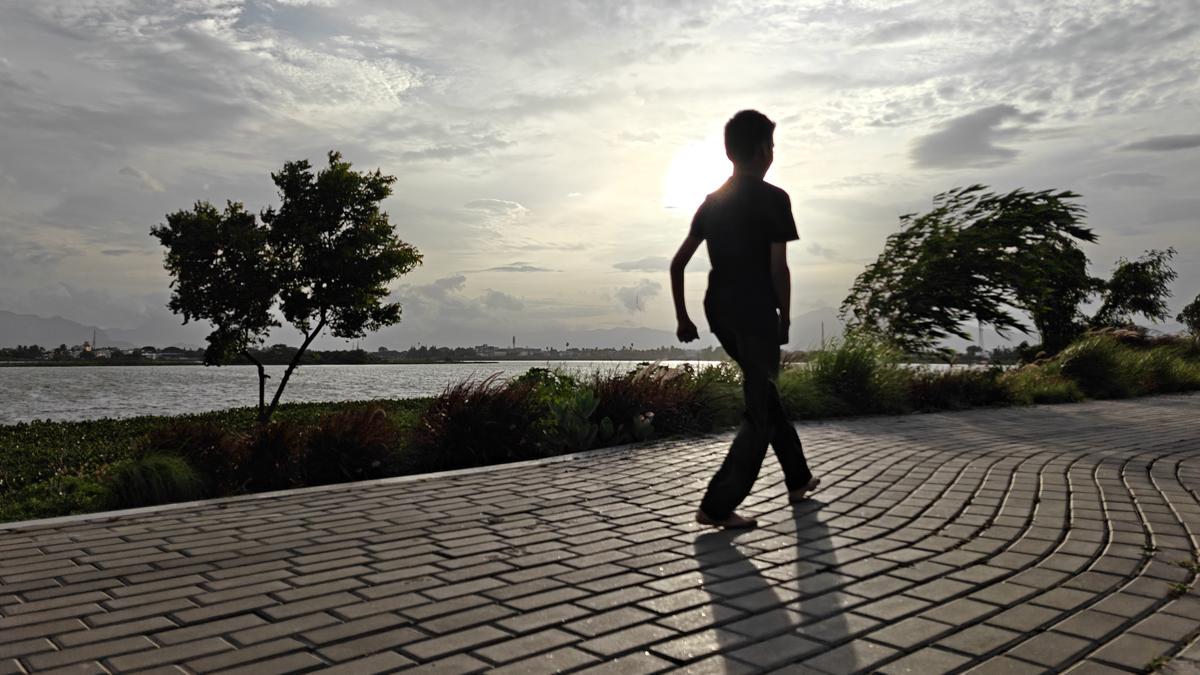Science
Simple Two-Minute Walk Can Detect and Prevent Hypertension

Hypertension, a condition affecting approximately 1.28 billion people worldwide, is increasingly prevalent, with nearly half of those affected unaware of their condition. In India alone, over 220 million individuals are living with hypertension, highlighting a significant public health challenge. Detection and management rates are particularly low among younger adults and rural populations, raising concerns among healthcare professionals.
Dr. T.S. Srinath, a senior consultant in cardiology at SIMS Hospital in Chennai, emphasizes the growing trend of early hypertension in individuals in their twenties and thirties. “But they don’t get tested until symptoms appear, often too late,” he says, underscoring the urgency of early detection and intervention.
Movement as a Preventive Measure
Recent studies, including those published by the American Heart Association, suggest that incorporating brief activity breaks can significantly lower average blood pressure and enhance vascular health. Specifically, taking just two minutes of activity every 30 to 60 minutes can yield substantial benefits, especially for those leading sedentary lifestyles.
Dr. Surya Prakash S., a consultant at the Institute of Cardiac Sciences at SRM Global Hospitals, explains, “Physiology is cumulative.” Simple actions like walking during phone calls, using stairs, or pacing while watching television can contribute to better long-term blood pressure control. For a country grappling with increasing sedentary behavior, these low-cost interventions present scalable solutions that can be easily integrated into daily routines.
Alongside movement, the two-minute walk test (2MWT) is gaining recognition as a useful tool for identifying early cardiovascular dysfunction. Initially designed to assess endurance in elderly or cardiac patients, this simple exercise test has been repurposed by clinicians to detect potential hypertension risks.
Dr. Madan Mohan B., an interventional cardiologist at MGM Malar Hospital, notes, “We check how much the blood pressure rises, how fast heart rate recovers, and whether the person reports symptoms like fatigue, dizziness, or breathlessness.” He highlights that a systolic increase over 20 mm Hg or a slow heart rate recovery can indicate poor autonomic control and vascular stress, both of which are early signs of potential health issues.
Integrating the 2MWT into Routine Care
Healthcare professionals advocate for the incorporation of the 2MWT into standard health assessments, particularly in primary care settings where access to advanced diagnostic tools may be limited. Dr. Prakash Ayyadurai, a consultant in orthopaedics and sports medicine, shares his experiences using the 2MWT to identify exercise intolerance in patients who typically present normal resting vital signs.
“A lot of people pass routine tests but struggle when asked to walk even two minutes,” he explains. Symptoms like palpitations or fatigue during this brief exertion can reveal underlying conditions such as prehypertension or vascular rigidity.
Dr. Srinath adds that the 2MWT is not only beneficial for screening but also for monitoring treatment progress in patients with mild or labile hypertension. “If blood pressure response improves and heart rate normalizes faster over time, it indicates that the patient is improving,” he says.
The call for integrating simple physical activity-based screenings into routine health checks is urgent. Dr. Surya Prakash states, “Two minutes of walking can be far more revealing than sitting in a chair for a BP reading.” This approach costs nothing, requires no specialized equipment, and provides valuable insights into cardiovascular fitness.
Even if not diagnostic, the 2MWT can help categorize patients into low, moderate, and high-risk groups, facilitating further testing such as ambulatory blood pressure monitoring or echocardiography.
Shifting Perspectives on Hypertension
The burden of hypertension in India is exacerbated by changing lifestyles. Data from the World Health Organization and the Indian Council of Medical Research indicate that younger populations are increasingly stressed, inactive, and consuming high levels of sodium and processed foods. Dr. Srinath observes, “Many still think hypertension is a disease of the elderly,” highlighting a misconception that needs addressing.
On a more positive note, Dr. Ayyadurai reports a growing interest in preventive fitness among urban youth. “In the last five years, I’ve seen more 20- and 30-year-olds coming in not with problems, but to learn how to stay fit. It’s an encouraging sign,” he states.
From mitigating vascular strain through micro-movement to identifying hidden dysfunction via the 2MWT, these brief interventions are becoming integral to preventive healthcare. As awareness grows and simple measures are embraced, there is potential for significant improvement in managing hypertension and enhancing overall cardiovascular health.
-

 World5 months ago
World5 months agoSBI Announces QIP Floor Price at ₹811.05 Per Share
-

 Lifestyle5 months ago
Lifestyle5 months agoCept Unveils ₹3.1 Crore Urban Mobility Plan for Sustainable Growth
-

 Science4 months ago
Science4 months agoNew Blood Group Discovered in South Indian Woman at Rotary Centre
-

 World5 months ago
World5 months agoTorrential Rains Cause Flash Flooding in New York and New Jersey
-

 Top Stories5 months ago
Top Stories5 months agoKonkani Cultural Organisation to Host Pearl Jubilee in Abu Dhabi
-

 Sports4 months ago
Sports4 months agoBroad Advocates for Bowling Change Ahead of Final Test Against India
-

 Science5 months ago
Science5 months agoNothing Headphone 1 Review: A Bold Contender in Audio Design
-

 Top Stories5 months ago
Top Stories5 months agoAir India Crash Investigation Highlights Boeing Fuel Switch Concerns
-

 Business5 months ago
Business5 months agoIndian Stock Market Rebounds: Sensex and Nifty Rise After Four-Day Decline
-

 Sports4 months ago
Sports4 months agoCristian Totti Retires at 19: Pressure of Fame Takes Toll
-

 Politics5 months ago
Politics5 months agoAbandoned Doberman Finds New Home After Journey to Prague
-

 Top Stories5 months ago
Top Stories5 months agoPatna Bank Manager Abhishek Varun Found Dead in Well









